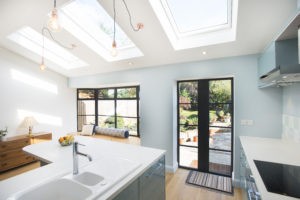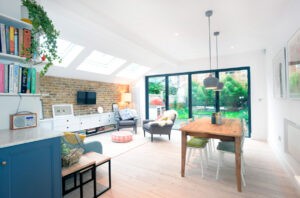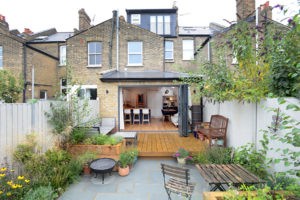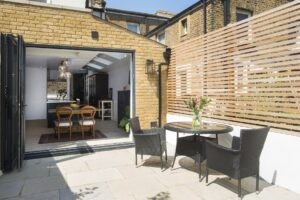When you’re extending your home, it’s the perfect time to plan an outdoor living space that blends seamlessly with your home extension. However, designing an outdoor area that works well with the rest of your home requires careful consideration and thoughtful planning. In this article, we’ll uncover our professional tips for incorporating an inviting outdoor space into your extension design.
We’ll discuss the benefits of connecting with nature, from vibrant garden designs with colourful flowers to a sustainable, low-maintenance oasis that brings joy all year round. Additionally, we’ll explore creating an outdoor kitchen with a stylish alfresco dining area, perfect for entertaining friends and family. We’ll uncover how these outdoor spaces enhance your home’s aesthetics, functionality, and overall value. You’ll also discover how they can flood your interiors with natural light and create a seamless transition that brings nature into your daily life.
Moreover, we’ll look at the key considerations you should consider during the design process, such as evaluating the available space and ensuring the outdoor elements complement and harmonise with your existing architecture. By understanding these essential factors, you can create an outdoor haven that fulfils your vision and creates the perfect space for you, your family, and your friends.
But our article doesn’t stop there. We’ll also look at the concept of outdoor retreats, integrating features like spas, hot tubs, and meditation areas and the magic of incorporating elements such as water features and fire pits that evoke a sense of calm and relaxation. By designing these retreats within your outdoor extension plans, you can escape the demands of daily life.
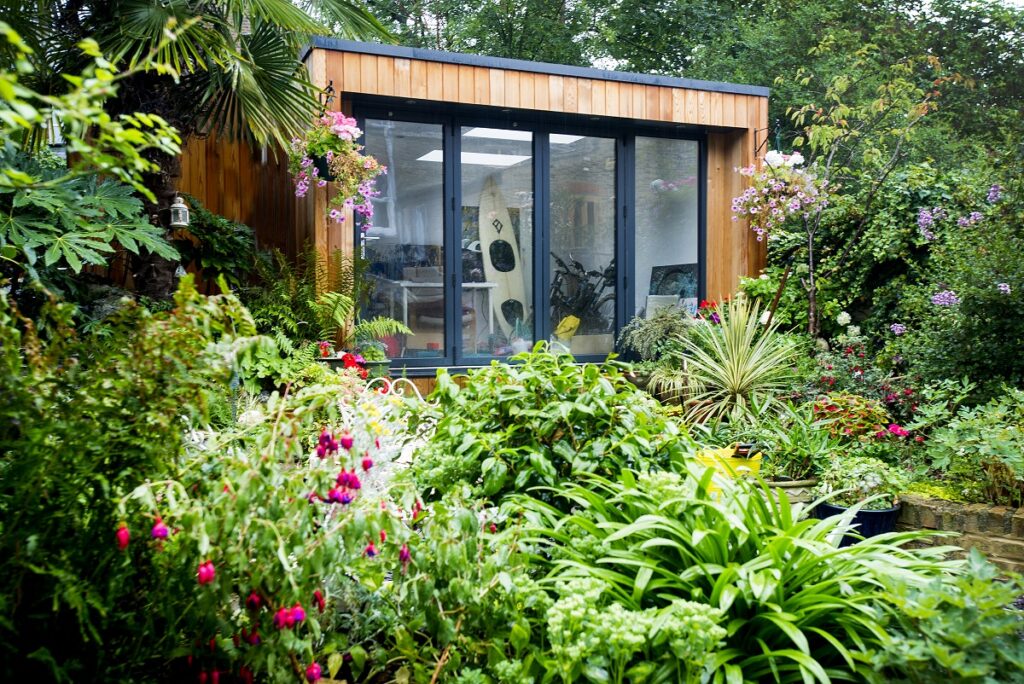
Key Considerations for Your Outdoor Space
Before embarking on your outdoor project, assess the available space. Consider the size, shape, and orientation of your property. Take note of any structures, trees, or natural elements that may impact the design. Understanding the spatial limitations will help you make informed decisions and maximise its potential.
Your outdoors should complement and enhance the existing architecture. Take cues from your house’s style, materials, and design elements to create a cohesive look. Harmonising indoor and outdoor aesthetics will ensure a unified visual appeal. Incorporate complementary colours, materials, and architectural details to achieve a cohesive design.
Consider how you intend to use your outdoor space. Will it be for entertaining guests, relaxing, or engaging in specific activities? Consider the functional requirements such as seating areas, dining spaces, or recreational features like a pool. Additionally, ensure a smooth flow between your indoor and outdoor areas, allowing for easy movement and accessibility.
When designing your outdoor space, consider the need for shade and privacy. Incorporate elements like pergolas to provide relief from the sun. Privacy can be achieved through strategically placed landscaping, fencing, or architectural features. Balancing openness with seclusion will create a comfortable and intimate outdoor space.
Your outdoor space will be exposed to the elements, so choosing weather-resistant materials that can withstand varying weather conditions is crucial. Opt for durable, low-maintenance materials such as composite decking and weather-resistant furniture specifically designed for outdoor use. This will ensure your outdoor space remains beautiful and functional for years to come.
Extend the usability of your outdoor space into the evening hours by incorporating well-designed lighting. Consider a combination of ambient, task, and accent lighting to create a warm and inviting atmosphere. Lighting can highlight architectural features, illuminate pathways, and create a cosy ambience for evening gatherings.
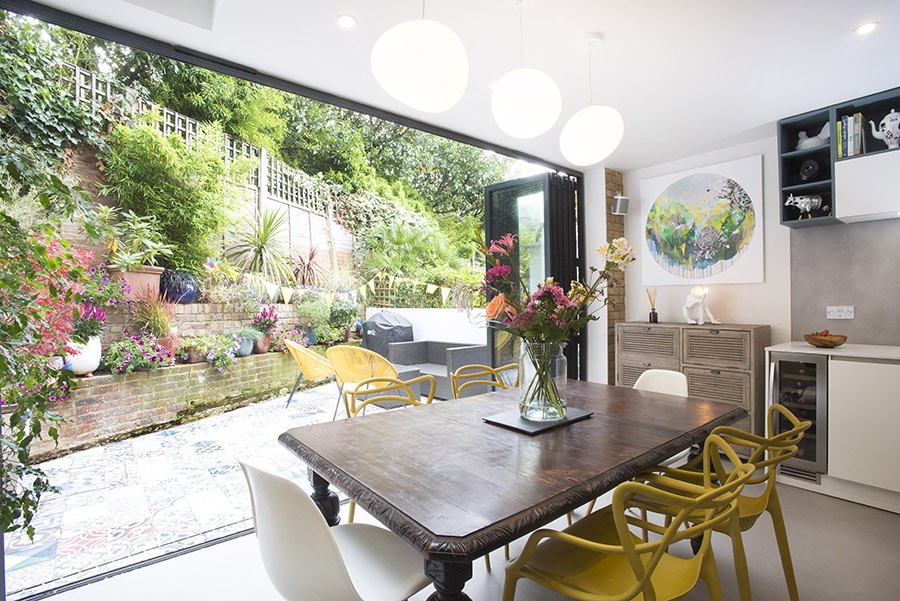
Enhancing Your Extension with Greenery
Whether you are a keen gardener or simply appreciate the calming presence of nature, integrating plants and landscaping into your extension can have a significant impact. Begin by evaluating the outdoor environment surrounding your extension. Consider factors such as sunlight exposure, soil quality, and climate conditions. This assessment will help you determine the plants that will thrive in your space and guide your selection process.
If you prefer a low-maintenance outdoor space, choose plants requiring minimal care and attention. Look for varieties that are native to your region, as they are generally well-suited to the local climate and will require less water and maintenance. Additionally, consider drought-tolerant plants that can thrive with minimal irrigation.
A garden can serve as a vibrant centrepiece for your outdoor extension. Incorporate a variety of plants, including flowers, shrubs, and trees, to add texture, colour, and visual interest. Consider plants with different blooming seasons to ensure year-round beauty in your garden. Additionally, explore vertical gardening techniques like trellises to maximise space and create a lush, green backdrop.
If you have a flat roof on your extension, consider transforming it into a stunning rooftop garden. Rooftop gardens offer a unique opportunity to create a green sanctuary while maximising the use of space. Consult with a structural engineer to ensure your roof can support the additional weight of the garden and consider implementing proper drainage systems to prevent water damage.
Embrace sustainable landscaping practices by incorporating rainwater harvesting, drip irrigation systems, and permeable paving. These eco-friendly elements can reduce water consumption, minimise runoff, and promote a healthy and sustainable outdoor environment. Additionally, consider using organic fertilisers and natural pest control methods to maintain the health of your plants without harming the ecosystem.

Designing Outdoor Dining Spaces
One of the most exciting aspects of extending your home is creating an outdoor dining space. Start by determining how you intend to use the space. Are you looking to create a cosy dining area, a vibrant entertainment space, or a combination of both? Understanding the intended purpose will guide your design decisions.
Just like indoor spaces, outdoor dining areas require careful consideration of layout and flow. Plan the placement of furniture and features to promote comfortable movement and encourage social interaction. Pay attention to the orientation of seating areas to optimise views and take advantage of natural elements such as shade and sunlight.
Choose outdoor furniture that strikes a balance between style, comfort, and durability. Opt for weather-resistant materials such as teak, aluminium, or synthetic wicker that can withstand the elements. Ensure the furniture is comfortable with plush cushions, and consider modular pieces that can be rearranged to accommodate different gatherings. Take your outdoor experience to the next level by integrating cooking facilities. Install an outdoor kitchen complete with a grill, countertops, and storage to enjoy alfresco cooking and dining.
Lighting plays a crucial role in setting the mood and enhancing the functionality of your outdoor dining spaces. Incorporate weather-resistant lighting fixtures that can withstand outdoor conditions. Combine ambient, task, and accent lighting to create layers. Pathway lighting and string lights can add a magical touch while ensuring safety and visibility.
Infuse your outdoor dining spaces with personal touches that reflect your style and create a welcoming atmosphere. Consider incorporating decorative elements such as outdoor rugs, throw pillows, and potted plants to add colour and texture. Additionally, introduce outdoor accessories like fire pits, water features, or outdoor speakers to enhance the ambience and create a truly inviting environment.

Unwind and Indulge with an Outdoor Spa
Imagine stepping into your own outdoor spa and relaxation retreat, a haven where you can escape the stresses of daily life. Incorporating spa-like elements into your outdoor space can create a serene oasis right in the comfort of your home.
Begin by assessing the available space and determining the level of privacy you desire. Consider factors such as neighbouring properties, noise levels, and potential sightlines. Select a location that provides a sense of seclusion and tranquillity, away from distractions and with minimal visibility.
Water features can be the centrepiece of your outdoor spa retreat, creating a calming and serene atmosphere. Consider options such as a bubbling fountain or a trickling waterfall. The sound of flowing water adds tranquillity and helps mask background noise, allowing you to unwind and relax fully.
A spa or hot tub is the ultimate addition to your outdoor relaxation retreat. Choose a high-quality spa that suits your budget, ensuring it provides the features and functions to enhance your spa experience. Place it strategically, allowing for privacy and views of your outdoor surroundings. Consider incorporating a sauna, steam room, outdoor shower, or meditation area. These additions will elevate your spa experience and provide a holistic approach to wellness in your outdoor sanctuary.
Design comfortable seating areas within your outdoor spa retreat, providing space to relax, meditate, or enjoy conversation. Incorporate plush outdoor furniture such as lounge chairs, daybeds, or hammocks with soft cushions and pillows.
Surrounding your outdoor spa retreat with lush greenery and landscaping will further enhance the sense of tranquillity. Integrate plants known for their calming properties, such as lavender or jasmine, to enhance relaxation. Strategically placed natural elements like rocks or pebbles can provide a sense of grounding and connect you with nature.


